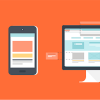7 Tips for working effectively with your infographic agency
Everyone wants to get from start to finish in the smoothest way and end up producing great infographic work, but sometimes that is easier said than done. We are huge supporters of collaborative working so we thought we would share some tips for collaboration.
1. Start with a Strong Briefing
It may be obvious, but getting the brief right is the fundamental start point for a great infographic For an infographic, you should have a clear idea of what the project is aiming to achieve so that everything can be tailored around those aims. Here are the main things:
- Title
- Short introduction Objective/aim/scope Budget
- Timing/deadlines
- Audience(s)
- Primary message
- Tone
- Success metrics
- Branding guide (if applicable)
- References or inspiration
Include these basics, plus any additional information you think would be helpful.
2. Debrief your most recent infographic projects
This should be a positive conversation that is held as you kick-off your project (and go over the brief). Use this to shed light on challenges you’ve faced in the past, whether in terms of distribution, ineffective content, lack of resources, etc. It helps to give your infographic design company a strong picture of where you’re at and what you’ve tried before so they can spot opportunities and come up with fresh angles to make the infographic a success.
3. Talk Solutions, Not Ideas
Focus on what you are trying to communicate, not just the thrill of brainstorming. The core of content marketing is about solving a communication problem so keep conversations focused on communication solutions rather than your ideas about infographic themes or stories. When you approach a project through this lense, your infographic design company can advise the best solution, not the best idea for your infographic. They are not necessarily the same thing.
4. Discuss Available Sources for your story
You might think you have a great idea for an infographic and the right content, but looking at your own company’s internal data might be the best place to start. Not all infographics require data, but it’s one of the best ways to tell the best story as proprietorial data can be turned into interesting editorial infographics that are valuable to both consumers and publishers.
Your infographic design company should be highly data literate, both in terms of narrative and design. They can help you identify opportunities for data storytelling, help find the story in your data, and bring it to life in a strong infographic.
But it starts with that first conversation about available sources.
5) Talk Story, Not Content (or Data)
Whether you’re telling a data story or delivering a message, you need to distil it into the most interesting, compelling story. A conflicting or confusing story is one of the most common mistakes in infographics—if there’s a story at all. As you brainstorm ideas with your infographic design company, always vet them through the lens of a strong narrative. That way you can make sure anything you come up with ties to the objective and is translated into language people can understand.
6) Give Your Approval at Every Stage
All projects – big or small – can been knocked off track by a last-minute edit or round of feedback. Your infographic design company should have an airtight production process, and it most likely includes approval stages, but to save everyone’s sanity, it’s important to make sure everyone is on the same page at all times. Don’t confuse this with micromanaging, it is best described as taking an active interest in success. Make sure you know what content stakeholders on your team need to review, including copy, wireframes, and design.
7) Have a Team Member Collate Your Feedback
There are usually a lot of stakeholders on a project, and although this digital age has given us plenty of collaboration tools, fielding piecemeal feedback via any of them drives everyone crazy and causes delay and confusion. To deliver the most useful and actionable feedback to your infographic design company, have someone collate feedback from your side before sending it over.
Want help in creating effective infographics? Let’s chat.





